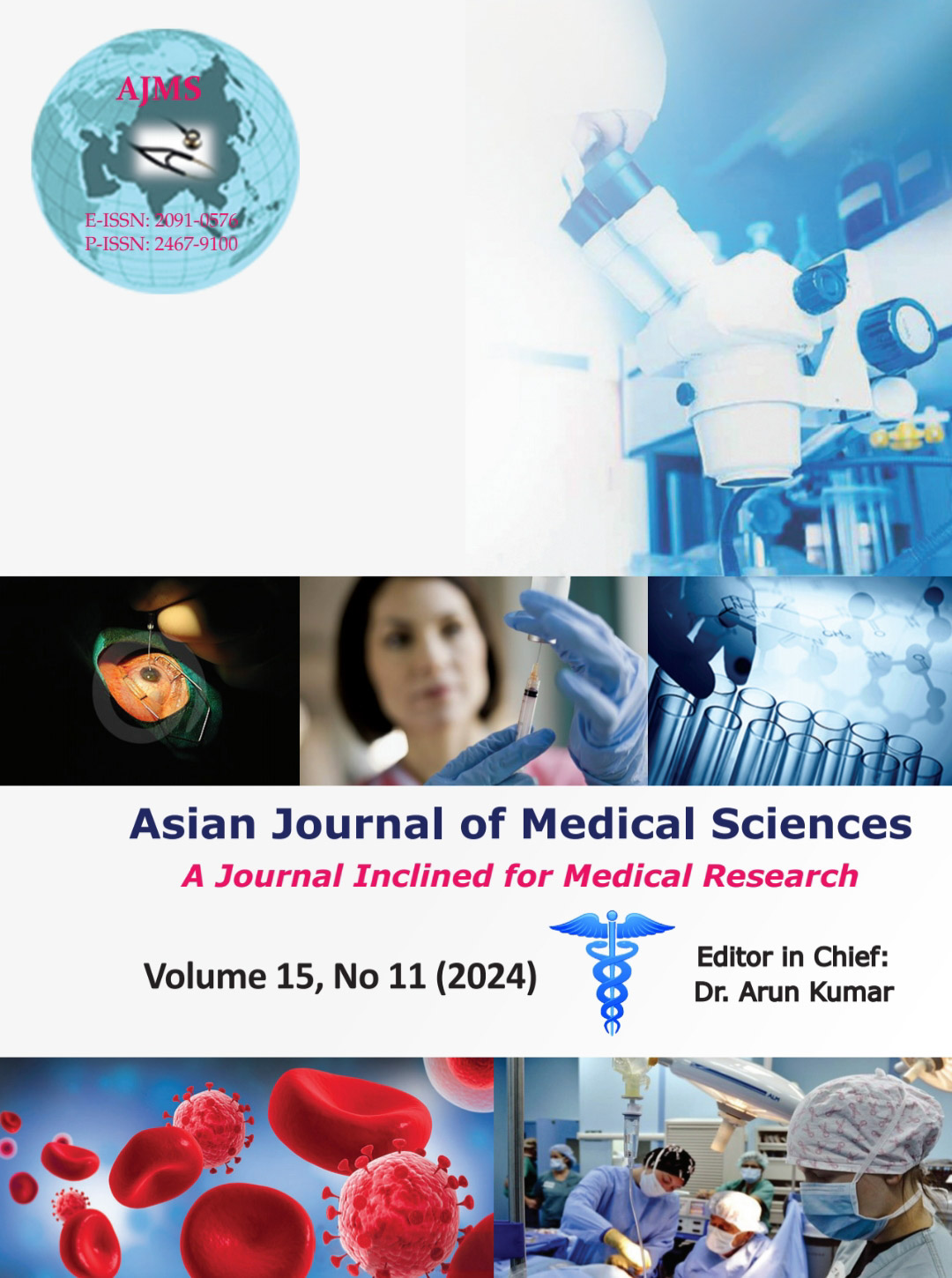Evaluation of the effectiveness and safety of treatments used in patients suffering from chronic obstructive pulmonary disease
Keywords:
Budesonide+formoterol; Chronic obstructive pulmonary disease assessment test, Chronic obstructive pulmonary disease; Effectiveness; Fluticasone+salmeterolAbstract
Background: Chronic obstructive pulmonary disease (COPD) is now one of the top three causes of death worldwide. Despite the availability of various kinds of treatments, there is a paucity of data regarding potential treatment for COPD.
Aims and Objectives: This study has been carried out to evaluate the effectiveness and safety of treatments used for COPD.
Materials and Methods: A prospective, longitudinal, observational study was carried out at a tertiary care teaching hospital. A total of 105 patients were included and divided into two treatment groups: Group budesonide+formoterol (BF) and group fluticasone+salmeterol (FS) based on the treatment they received. Patients’ details were recorded in a pre-defined case record form. Effectiveness was evaluated and compared between the two treatment groups in terms of the number of exacerbations experienced, the mean reduction in COPD assessment test (CAT) score, and the mean change in forced expiratory volume 1 s (FEV1%) at the end of the study period. Safety was assessed by recording adverse drug reactions.
Results: Out of a total of 105 patients with COPD, 67 (63.80%) patients belonged to group BF and 38 (36.19%) patients belonged to group FS. Twenty-seven (40.30%) patients from Group BF (n=67) and 18 (47.37%) patients from group FS (n=38) developed exacerbations. No statistically significant difference between group BF and group FS was observed in terms of mean reduction in CAT score (P= 0.17) as well as mean change in FEV1% (P=0.38) from baseline to the end of 6 months of treatment.
Conclusion: Our study concludes that inhalational corticosteroids/long-acting beta-agonist combinations such as BF and FS are equally effective in terms of reduction in frequency and severity of exacerbation, reduction in CAT score, and improvement in lung functions (FEV1%).
Downloads
Downloads
Published
How to Cite
Issue
Section
License
Copyright (c) 2024 Asian Journal of Medical Sciences

This work is licensed under a Creative Commons Attribution-NonCommercial 4.0 International License.
Authors who publish with this journal agree to the following terms:
- The journal holds copyright and publishes the work under a Creative Commons CC-BY-NC license that permits use, distribution and reprduction in any medium, provided the original work is properly cited and is not used for commercial purposes. The journal should be recognised as the original publisher of this work.
- Authors are able to enter into separate, additional contractual arrangements for the non-exclusive distribution of the journal's published version of the work (e.g., post it to an institutional repository or publish it in a book), with an acknowledgement of its initial publication in this journal.
- Authors are permitted and encouraged to post their work online (e.g., in institutional repositories or on their website) prior to and during the submission process, as it can lead to productive exchanges, as well as earlier and greater citation of published work (See The Effect of Open Access).




